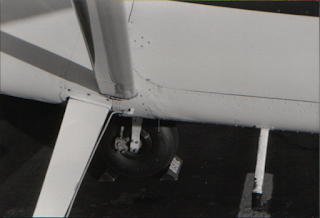Question:
I’m looking at a tail wheel aircraft that has wrinkles or dents around where main landing gear legs go into the fuselage. It also looks like a patched area. There is nothing in the logbooks about repairs, has this aircraft been wrecked?
Answer:
Wrinkles do not mean wrecked. But they do typically indicate previous damage or stress. I’d guess the aircraft has had a few hard landings or even a few ground loops. Make sure the mechanic looks for the FAA “Form 337, Major Alteration and Repair” in the aircraft records. You can also order (through the FAA or other search companies) a copy of the FAA 337 Forms for a specific “N” number aircraft. This report will show you any Form 337’s that have been filed with the FAA on that particular aircraft. If that doesn’t show any damage all you have is visual information.
Whatever the result, the mechanic should inspect the gear attach points for un-repaired damage. Landing gear on any aircraft gets a lot of stress. Custom built aircraft are notorious for landing gear damage, along with training aircraft. It doesn’t matter if it is a conventional gear (tail wheel) aircraft or a tri-gear aircraft. New pilots have a tendency to make hard landings and newly completed custom aircraft take a while to become accustom to. Don’t be surprised, just make sure the aircraft is inspected carefully.


